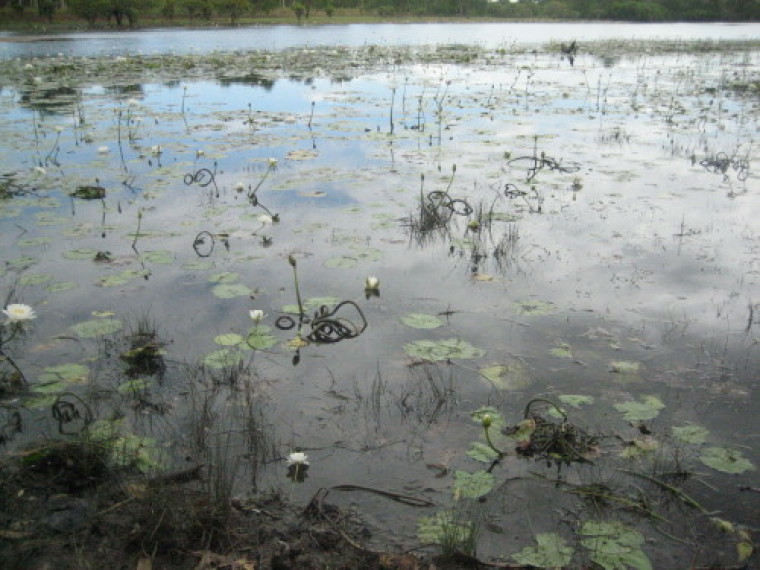
The film 'Australia' was set in the Northern Territory from the late 1930's and through to the bombing of Darwin on 19 February 1942. This was a Baz Luhrmann film centering on a number of issues, including that of the discrimination against both the Aboriginal community and those of half cast birth. (www.australiamovie.net)
The presentation in the film 'Australia' was indeed graphic with the capture of the panic and it demonstrated the fog of war. In this second article on the 1942 Bombing of Darwin Mark Tronson is looking at what place 'food security' was given by both the Government and the Japanese who at one time had on their agenda a possible landing.
The film 'Australia' certainly picked up on this with the cattle drive where the nation and the nation's military required such food security. This is interested Mark Tronson for in the 1970s there was a television show entitled 'The Bush Tucker Man' (Les Hiddins) which demonstrated first hand how to find food in arid Australia, from the Western Australian coastline to central Australia. (en.wikipedia.org/wiki/Les_Hiddins)
Great wealth of natural food
This popularised the idea that Australia really was a nation of great wealth in foodstuffs, if only one knew how to get to it and what selections there were. Eat the wrong thing and you could end up very ill or even dead.
Australia's indigenous people knew all these things from their previous generations who taught them orally from one generation to the next down through the centuries. They would not have survived here for generations upon generations if they had not learnt these lessons well!
Tourists visiting Alice Springs will see for themselves a number of interesting and fascinating issues associated with bush tucker. There are a number of tourist sites which specialise in the type of bush tucker that is found in desert areas. In particular, information about desert living – detailing where water can be found, what foods are more plentiful in what seasons, how quickly the desert blossoms with lots of rain and just as quickly, how it returns to its dry state.
Knowledgeable guides take the visitors through the various displays and walks, explaining how the climate seasons affect the bush tucker and what foods are edible and easy to find, and also pointing out attractive items such as those melons seen from the side of the road, that one should not eat upon pain of death.
Medicinal
There are also laboratories of the CSIRO ( Commonwealth Scientific and Industrial Research Organisation) based in Alice Springs. Two of these facilities are the Desert Knowledge Precinct and the Arid Zone Research Institute. One of the tasks of the scientists who work here is to analyse Australian food items used traditionally by Aborigines of the area, to ascertain both their nutritional value and any medicinal properties they may have.
The Aboriginal knowledge of medicinal benefits certain plants and foods possess for specific ailments is profound and the scientific analysis of these have shown that their knowledge was remarkable. It is an entirely different situation to that of marketing a bush tucker product. This work is ongoing, and follows food and medicinal analysis of 'bush foods' in other parts of Australia, some of it by CSIRO and some by University researchers, since the 1960s.
Alice Springs Desert Park is also informative, and provides each visitor with an audio guide of the park. The commentary is very clear and the information useful, covering a variety of habitats managed within the park such as: the Woodlands; Hunting Grounds; Sand Country, and Desert Rivers. There are also guides to show the visitor a bird theatre, a nocturnal house and a presentation about Aboriginal traditional hunting practices.
What is made clear by these presentations, is that the desert is actually a place of plenty, as long as one knows where to look. It is a land of rich harvest in terms of being sustainable for humans and the central focus is to maintain these lands in their natural habitat to retains these precious bush tucker foods - and more importantly - the water holes.
Without such knowledge and without a huge logistical effort on behalf of the Japanese, more and more is coming out now with the hindsight of archived records from the Japanese that food was a major concern had a decision been made to invade.
Dr Mark Tronson is a Baptist minister (retired) who served as the Australian cricket team chaplain for 17 years (2000 ret) and established Life After Cricket in 2001. He was recognised by the Olympic Ministry Medal in 2009 presented by Carl Lewis Olympian of the Century. He has written 24 books, and enjoys writing. He is married to Delma, with four adult children and grand-children.
Mark Tronson's archive of articles can be viewed at www.pressserviceinternational.org/mark-tronson.html
